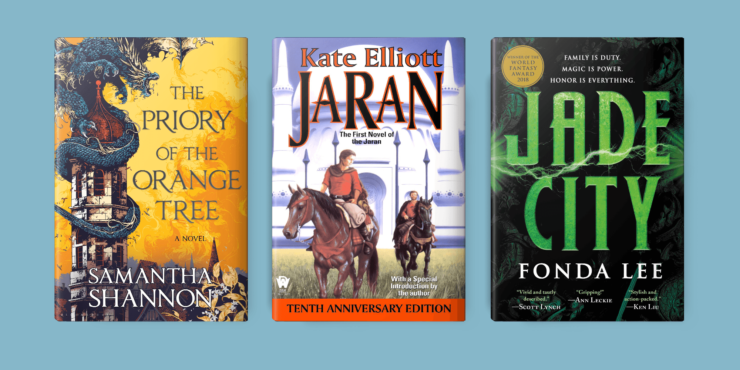The first thing my parents taught me, more by accident than intention, was that travel gets into your blood. It’s a drug. It’s magic. I was born on the northern edge of Montana where on cold, clear nights you could glimpse the auroras stretching through the night sky, like psychedelic fingers clutching at the fabric of the universe. By the time I was four we’d already lived in a dozen places crossing multiple states and geographic regions. My earliest memories are divided between the American West and the azure beauty of the Caribbean, spending a year of my life on a small island off the coast of Puerto Rico, running along sunny, sandy beaches with my dog Chewie (short for Chewbacca of course), both of us pups still.
A few decades, over a dozen countries, and several continents into this journey, worshiping at the Church of Bourdain (who made me and many, many others believe that traveling across this beautiful planet was not only possible, but required), and I’m still chasing that feeling of sitting in a bar overlooking a never-before-seen view, the smells of the kitchen wafting over me along with the soft buzz of languages I don’t understand. It’s that shot of simultaneous contentment and exhilaration that comes from new soil beneath my feet, fascinating unexplored architecture, the ebb and flow of conversation in the local dialect. In the air and in a word: culture.
The second lesson my parents taught me, again more by accident than anything else, was that books are constructed of the same magic that travel is imbued with.
Travel is culture and if books transport us to fantastical new worlds, then by definition fiction, and fantasy in particular, is culture. The sharing of cultures we’ve encountered, seen through a unique view, or created whole-cloth. Recreating that feeling of sitting in the bar in a new land—one I’ve experienced in nearly every country I’ve visited and is pure magic in every sense—is difficult on the page, but it’s there, friends. An old favorite of mine is Robert Jordan (I know, I know, you either LOVE Mr. Rigney or he’s not your cuppa, but I’m in the former camp) who created such scenes by the dozen like when Rand and Mat sing for their supper at inns and taverns or when Nynaeve, Elayne, Egeanin, and Thom share a meal in Arad Domon where sursa (chopsticks) are used in place of a fork. The hostess whispers that she’s left forks beneath their napkins and it was such a nice touch because I’ve found myself in just such a situation (though I am decent with chopsticks these days). He showed how even something as simple as a glass of water was vastly informed by a character’s culture, whether they were a wetlander or an Aiel. Some of my other favorites in recent years have been The Green Bone Saga by Fonda Lee, Jaran by Kate Elliot and The Priory of the Orange Tree by Samantha Shannon.
Fonda Lee’s The Green Bone Saga is a gritty trilogy that draws inspiration from Japan, Hong Kong, and other various cultures found sprinkled amongst the archipelagos and islands of Southeast Asia with its history of wars against imperial powers, isolationism, and deeply rooted traditions. Lee creates a world that feels at once modern and fantastical. It is fully lived in with all of its complexities and contradictions, and populated with intriguing characters that show us their world through their eyes: from the way would-be street toughs look up to Green Bones (men and women who use jade to give them magical abilities) to the way we see clan leaders both exploit and protect shopkeepers within their territory. Boat Day, a festival meant to bribe the Typhoon God with feasting and pageantry, is another great example where not only do we see the beliefs and religions of the people. Lee uses the scene to set the stage for an early encounter that will significantly up the stake in the budding clan war to come.
Lee’s talent for conveying culture and meaning through names is on display throughout the series, like the opening scene in the Twice Lucky, a bar where we’re introduced to her world through the evocative scene of scratchy, low opera music in the background, smoke in the air, and the pungent smell of fish stew and fried squid balls filling the room. It’s exactly the sort of scene anyone who has been to a new city will recognize… walking down a side street and the smell of something delicious or musical chords you’ve never heard before beckon you on, ever deeper into this new magical place. Speaking of magic, the jade magic which allows only certain individuals to harness the power of jade (and is also poisonous) adds depth to the Godfather-esque storylines that will pull you in from that first scene in the bar. Here’s the secret, dear reader, the setting, the story, it’s ALL magic.
In Jaran, Kate Elliot creates a fully realized, migrational society that echoes back to the Khanates of Asia and Eurasia, but with some unique twists that borrow from other societies that allow her to create a Khanate in which women, not men, hold the true political authority. From the jump, we realize we’re in for a treat as we are introduced to a future Earth under subjugation by an inscrutable alien empire known as the Chapalii, and follow the representative of humanity’s heir as she flees her responsibility (one she never wanted) seeking shelter in a backwater planet only to discover the empire has emissaries hidden away in places that it shouldn’t. This ‘primitive’ (to our protagonist, Tess) Rhui civilization holds deep secrets that pull her ever deeper into the Khanateespite setting up a heart pounding mystery, the reason I kept turning the page was to find out how these people lived, what they thought, what they fought for, and how Tess (as both woman and outsider) was going to fit within their very structured society where gender defined what is allowed and what is prohibited. Tess bends these rules, becoming one of the lone female Riders (one of the elite warriors who protect their own lands while seeking to conquer their rivals) and giving the reader a glimpse into all facets of Rhui life. Culture through character is truly Queen (or Khan).
Samantha Shannon’s The Priory of the Orange Tree shows us an entire world built from various, fragmentary societies, some more fleshed out than others, but all very different, each based on their culture’s views of one specific type of magical creature: the dragon. We get to see Asian dragons side by side with European dragons which, I admit as a lover of all things dragon, would have hooked me on its own. That Shannon also creates societies with disparate perspectives on religion, foreigners, sexuality, and other cultural elements—all developed from their perspectives on dragons—drew me in deeper. Imagine an early Catholic-like society with a living saviour who believes they alone hold the knowledge of how the world was saved once before from demons (or were they dragons?) and how it will be saved again. Or take an isolationist Japan where contact with any outsider could be punishable by death, and the would-be Dragonrider accidentally saves an outsider’s life and must pray she can escape notice before she loses everything. Threaded through these nations is a hidden group of assassins and spies reminiscent of the real-world, historical Nizari Isma’ili leader, Rashid ad-Din Sinan or the Old Man of the Mountain (look him up–he’s also the inspiration for the Assassin’s Creed series) who has eyes and ears everywhere. Each of these societies has pieces of the truth about what happened the last time the world was threatened by demons (dragons). While these truths form the bedrock of their culture, it’s often obscured beneath layers of dogma that have grown up around it over time. Shannon leaves the reader wondering if these clashing cultures will be able to set aside their differences and sew those threads of truth into the whole cloth. This culture clash forms the background of a winding, twisting plot that unfolds over hundreds of pages. Fantasy lovers, eat your heart out.
Buy the Book


The Sin in the Steel
My upcoming debut, The Sin in the Steel, shows us the world I created through the eyes of Sambuciña ‘Buc’ Alhurra, a compellingly chaotic heroine who is part Sherlock Holmes, part young Indiana Jones and ALL herself. Buc shares a sisterhood with Arya Stark and Lila Bard of V.E. Schwab’s Shades of Magic. The first private investigator in her world, Buc’s too smart for her own good, with a razor-sharp blade hidden up her sleeve and an even sharper tongue. We get to tag along as she bests pirate queens, mages, and uncharted seas to solve a mystery. Her world is an exciting conglomeration of the Mediterranean basin—think Venice, Cordoba under the Umayyad Empire—with distinct flairs of cultures we’d find in the Caribbean and the South China Sea.
Anthony Bourdain said travel “…leaves marks on your memory, on your consciousness, on your heart, and on your body.” I think good books do too. I’ve already got Gods of Jade and Shadow by Silvia Moreno-Garcia on the top of my to be read pile. Jazz age Mexico where the Mayan god of death sends a woman on an impossible journey? Yes, please.
What are some of your favorite places, in books or real life?
Ryan Van Loan is a debut Fantasy author who served six years as a Sergeant in the United States Army Infantry (PA National Guard) where he served on the front lines of Afghanistan. His forthcoming novel, The Sin in the Steel was purchased by Tor Books publication as a series.










